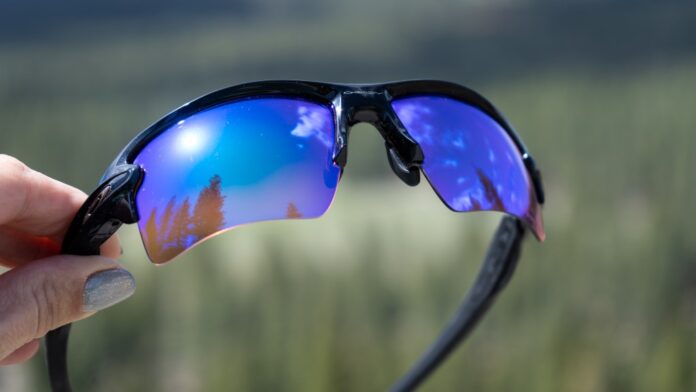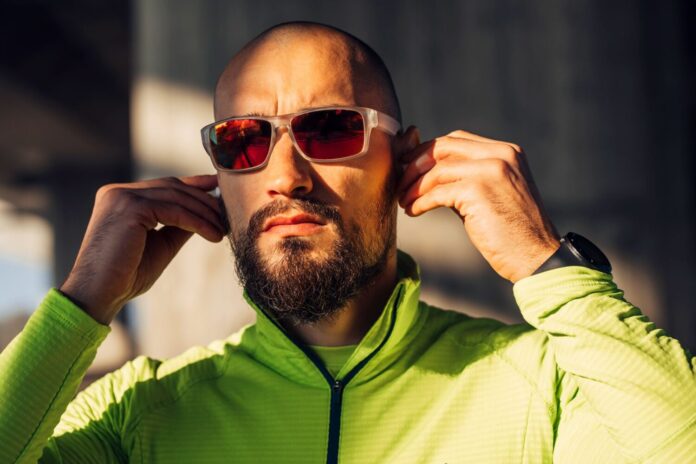Sports eyewear is different from regular glasses, sunglasses, and work sports glasses in terms of its features. Sports eyewear is made in a range of shapes and is designed to meet the demands of each sport. Wearing regular eyewear when participating in sports or playing, even on the playground, increases the risk of significant eye and face injuries. These injuries may be caused by eyewear breaking that releases explosive shrapnel particles, direct, blunt force damage from lens or frame portions struck by collisions, balls, or even playground equipment accidents.
The Difference Between Regular Glasses And Sport Sunglasses
There are several differences between these two, such as in the lens, frame, etc.
Different Lens

The primary difference between regular and sports glasses is the lens. The lens protects the eyes more aptly when it comes to sports glasses. It does not matter if they are prescriptions or not. In contrast to the lenses found in typical glasses, these lenses have excellent impact resistance.
Although several materials can be used to make sports glasses lenses, polycarbonate is the most common. Lenses made of polycarbonate are more impact-resistant and lighter than glass-based lenses. Despite this, they are more prone to scratching due to their softer nature. Furthermore, a scratch-resistant coating is available for polycarbonate lenses to reduce scratches.
High-Quality Standards
Sports sunglasses have a raised standard of quality and a higher quality of impact resistance. One of the most regarded safety standards in eyeglasses, in terms of quality, is from the American National Standards Institute. Lenses have to undergo several tests to be considered compliant.
A “drop ball” test is one of the checks to ensure it is of the finest quality. In this test, a steel ball measuring one inch is dropped from fifty inches onto the lens. It has passed the test if the lens does not face any cracks, scratches, or shatter. But, if any events occur, it breaks or cracks, so the lens will not be ANSI certified. This is merely one test of a series meant to evaluate a lens’s strength and quality.
Difference In Frames

A significant distinction between sports and regular spectacles also depends on their frames. The popular materials used for sports glasses are nylon. It is mainly due to its light weight and flexibility. Numerous materials can be used to create eyeglass frames for regular wear, such as plastic, titanium, etc. Sports eyewear often has a lot of wraps. The frame’s wrap mimics the shape of the face. This lessens the chance of any things striking the eyes from the side.
Protective eyewear frames are built to withstand more significant impacts, much like their lenses are. They are put through tests to see how durable they are. one test is where the frame with lens is struck by a projectile that weighs around seventeen ounces. The frame must ultimately hold the lens to pass and pass, and no component can fall apart or split from the frame’s surface. There are other tests too that they have to pass through.
When To Wear Sports Sunglasses
Despite being made of a different material, sports glasses can be non-prescription and prescription, too, just as regular ones. If one usually wears contacts or glasses, prescription sports glasses are a fantastic option because they provide protection and excellent vision.
One might believe that because their everyday glasses are bulky and sturdy, their eyes are protected; however, that is not the case. One cannot get the same protection from regular goggles as from the protective eyewear, irrespective of their durability or size. Whether at the workplace, at home, or during athletic activities, protective glasses must be worn at all times if there is a risky environment
Advantages Of Sports Sunglasses
Take a look at some of the advantages of the protective eyewear.
Improve Performance

Sports eyewear is produced and created expressly to help improve visual performance. Sports eyewear’s frame style aids in protecting the eyes. They can help enhance the vision. However, that depends on the activity and the conditions and surroundings in which it is practiced. Even if they do not require vision correction, many elite athletes wear glasses to improve their eyesight while playing sports. This is because sunglasses block out undesirable glare that the human eye cannot. Athletics eyewear has been shown to improve eyesight and provide an extra “advantage” over competitors.
Eye-Protection
Sports glasses are a mandatory item of protective eyewear for several games or athletic activities. o A fast-moving object striking the eye can seriously impair eyesight. In extreme situations, it may even result in lifelong blindness! Most sports glasses include a particular lens substance that guarantees eye protection. Substances like polycarbonate assist in reducing the force of impacts. How the eyeglass frame is made also contributes to the safety of the eyes. Additionally, the majority of sports glasses adhere to strict eye safety regulations.
Improve Vision

Sporting eyewear is crucial for protecting the eyes, but that’s not only it; they can also improve vision! Even if one has excellent vision, a pair of sports sunglasses can improve your eyesight as they drastically reduce glare. It also improves contrast and clarity. When all of these factors work together, one may perceive objects more clearly, which helps the wearer react more quickly and precisely.
Squinting is a typical reaction to bright light and can be bothersome and painful. Squinting can cause headaches, dry eyes, and even clouded vision because it strains and exhausts the muscles around the eyes. By filtering out extra light and preventing needless squinting, sports sunglasses help to mitigate this issue.
Conclusion
Summing up, sports and regular eyewear differ in quality, materials, and function.
Sports glasses and other safety goggles can reduce the risk of eye injuries by protecting and shielding the eyes. Many sports eyewear options include goggles that fit firmly in place on the face. Thus, they do not move around the faces while running or engaging in athletic activities. Compared to standard prescription eyeglasses, they typically weigh less and have sleeker designs.






